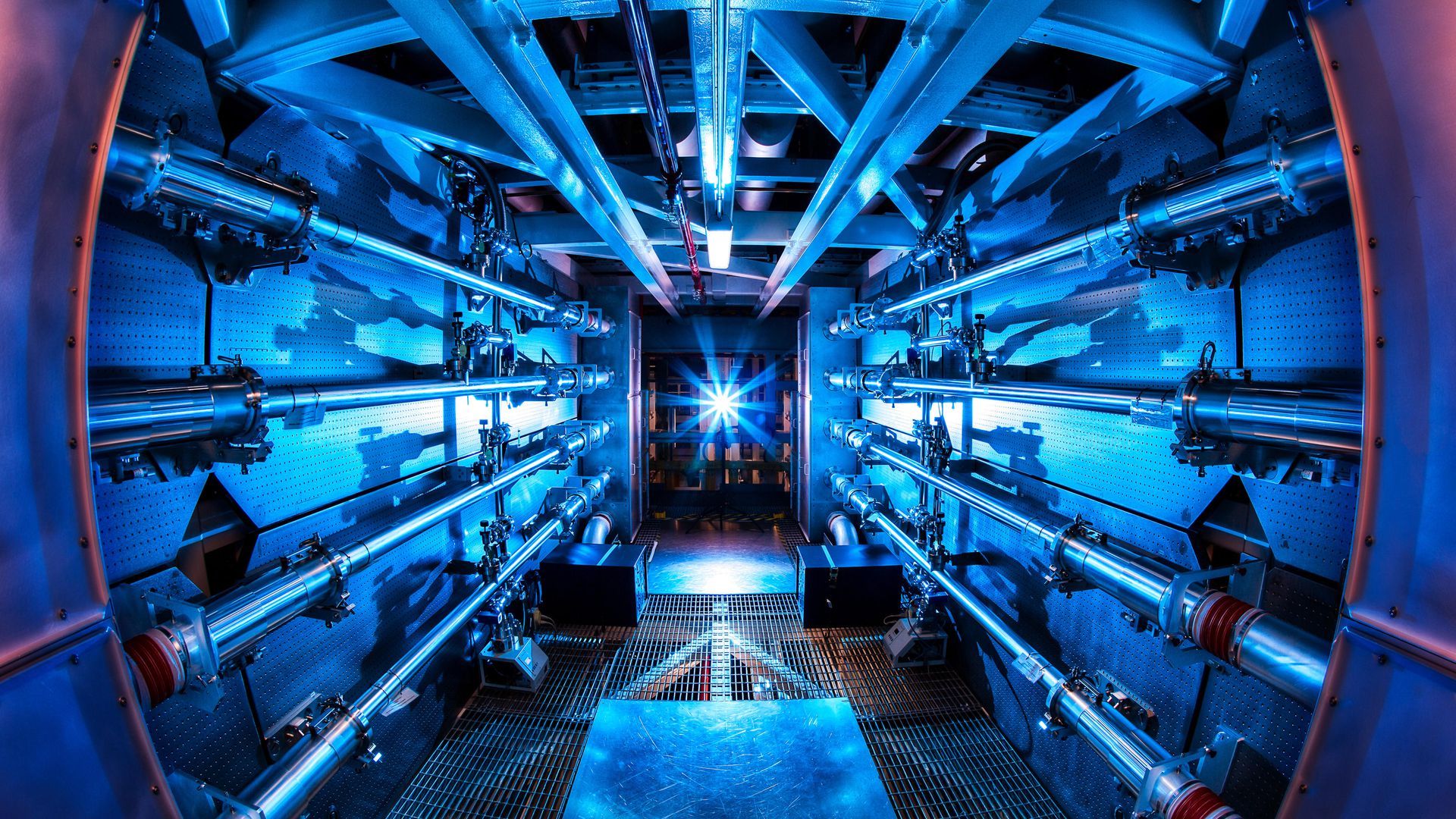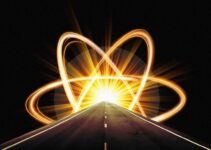
Inside a support structure at NIF. Photo: Damien Johnson/Lawrence Livermore National Lab
A federal fusion energy reactor has achieved a crucial goal for the first time: producing more energy than required to start the reaction in the first place, Department of Energy officials announced at a press conference Tuesday.
Why it matters: Scientists have worked for six decades to develop nuclear fusion as a source of effectively limitless clean energy. Ignition is a key milestone in harnessing nuclear fusion, but turning it into a commercial power supply would require clearing additional scientific, technical and financial hurdles.
- “We have taken the first tentative steps toward a clean energy source,” said Jill Hruby, the Energy Department’s national nuclear security administrator.
Driving the news: On Dec. 5, the National Ignition Facility (NIF) at the federal Lawrence Livermore National Laboratory (LLNL) achieved “ignition,” in which a fuel is ignited and can keep burning on its own.
- The key consequence: The reaction’s output is more energy than what is input.
- “Ignition is a first step, a truly monumental one that sets the stage for a transformational decade and high energy density science and fusion research,” LLNL Director Kim Budil said.
- The press conference offered details about the experiment, which the Energy Department is calling a “breakthrough” and was first reported in a scoop this weekend from the Financial Times.
How it works: The fuel for NIF is made up of deuterium and tritium inside a polished diamond spherical capsule that is placed in a hollow container.
- 192 high-energy lasers converge on the capsule, compressing the fuel and, for a moment, simulating the conditions inside a star.
- The researchers report producing just over 3 MJ of energy after putting in 2 MJ.
- It is “a scientific milestone … and also an engineering marvel beyond belief,” U.S. Office of Science and Technology Policy director Arati Prabhakar said.
But, but, but… The lasers used are the most energetic in the world and require about 300 MJ to operate. “The laser wasn’t designed to be efficient. The laser was designed to give us as much juice as possible to make these incredible conditions possible happen basically in the laboratory,” Mark Herrmann of LLNL said.
- There are still key scientific, technical and financial hurdles to clear in commercializing the technology.
- Those include: “[C]an we make it simpler? Can we begin to make this process easier and more repeatable? Can we begin to do it more than one time a day? Can we start working toward recreating each of these is an incredible scientific and engineering challenge for us?” Budil said.
Go deeper: Physicists report first creation of self-heating plasma for nuclear fusion (Axios)


